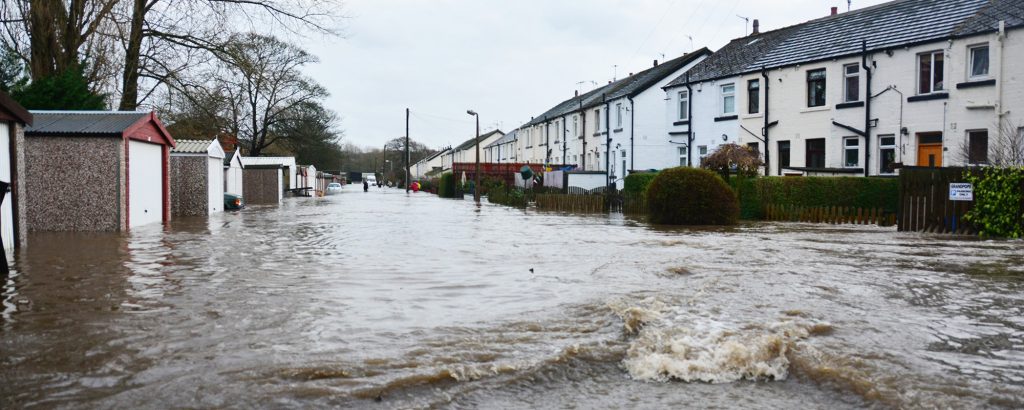
When you own a leasehold property, it can be confusing to know what home insurance is needed and who is responsible for arranging it. There are two types of insurance you need to make sure are in place — buildings insurance and contents insurance. Below, we’ll detail what they cover and whether you or the freeholder need to arrange them.
Buildings insurance for a leasehold property
Buildings insurance provides financial protection for the structure of the property. Should the building need repairing or, in a worst-case scenario, rebuilding after an unexpected event, the costs are covered. This type of insurance usually covers damage that’s been caused by:
- Fire and explosions
- Flooding, storms and other natural disasters
- Vandalism and theft
- Subsidence
- Frozen, leaking or burst pipes
- Fallen trees
- Vehicle collisions
When you own a leasehold flat, the buildings insurance should also cover:
- The other leasehold flats in the building
- Communal areas, such as hallways and stairs
- Communal gardens
- Liability insurance for both visitors and staff, such as gardeners, cleaners and security staff
- Flats that are left unoccupied for a period
- Extra refurbishments carried out by the flat owners
Do you need buildings insurance for a leasehold house?
Having buildings insurance isn’t a legal requirement. If you’re buying a property with a mortgage, however, the lender may stipulate that this insurance is in place. It may also be a requirement of your lease so check the terms carefully to be sure. Leasehold houses aren’t very common but if you do own one, then arranging the buildings insurance is usually your responsibility. Again, check your lease terms to clarify this. Even though it’s not required by law to have this insurance, the costs of repairing or rebuilding your property could be huge. This cover provides you with a financial safety net should something unforeseen happen.
Who arranges buildings insurance for a flat?
If you own the leasehold of your flat, the freeholder has more than likely already arranged buildings insurance for the entire building. This means you don’t need to take out a separate policy but be sure to check this. Assuming it has been arranged, the cost of this insurance has probably been passed onto you via your service charge.
If the freeholder hasn’t arranged any buildings insurance and it’s their responsibility under the terms of the lease, you can contact them to do this. In the meantime, it’s advisable to take out separate buildings insurance for your flat to provide yourself with financial protection. Once the insurance has been arranged by the freeholder, you can cancel your policy and hopefully receive a partial refund.
Even when cover has been put in place by the freeholder, check whether you have any responsibilities for arranging separate buildings insurance. For example, the freeholder’s policy may cover the property’s roof and your flat’s exterior. The fixtures – such as a fitted kitchen and bathroom suite – within your Bexleyheath flat, however, may be considered your responsibility under the lease terms. In this case, you need to arrange a separate buildings insurance policy to cover them.
If you and the other leaseholders have joined together to buy the freehold, arranging the buildings insurance is your collective responsibility. It’s best to insure the entire building in one policy rather than each of you taking out separate cover. This ensures that every part of the building is insured with the same level of cover. As well as the policy inclusions mentioned above, it’s a good idea to check that you’re covered for alternative accommodation. For example, if there’s a flood or fire in the building, you may all have to move out until the repair works have been completed.
Contents insurance for a leasehold property
Contents insurance gives you financial cover for your belongings in case they are lost, stolen or damaged by an unexpected event, such as a fire, flood or subsidence. Just like buildings insurance, it’s not a legal requirement but it’s recommended to protect yourself financially. Have a look around you at everything you own — would you really be able to afford replacements if you were burgled or everything was damaged in a fire?
Arranging this cover is your responsibility rather than the freeholder’s. As well as standard contents insurance, you can benefit from optional add-ons. Accidental damage cover, for example, provides financial protection against damage that happens accidentally, such as cracking the television screen or spilling paint on the carpet. Personal possessions cover is for the belongings that you take with you when you leave your Bexley home, such as your phone, watch, handbag, jewellery, laptop and golf clubs. You can also choose to include options such as home emergency cover, legal expenses cover, away-from-home cover and bicycle cover.
Ensure your leasehold property is protected with home insurance
Whether you’re looking for buildings insurance, contents insurance or a combined home insurance policy, we can make sure you have the right amount of financial protection in place for your leasehold property. Our mortgage and protection brokers – located in Kent, London and Edinburgh – can guide you on the policies available and the level of cover needed. They will ensure that you’re fully aware of the inclusions and exclusions as well as the optional add-ons available to you.
Just give us a call on 01322 907 000 to discuss the details or send us an email at info@trinityfinance.co.uk. We’ll reply to you with more information about our range of mortgage and protection services. When you’re happy with the cover provided, your bespoke insurance policy can be arranged, giving you peace of mind that your home is financially protected.
Talk to the mortgage experts.
Call us on 01322 907 000
or enquire now
Get in touch
Error: Contact form not found.

